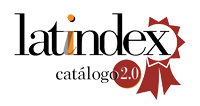El personal learning environment en el proceso de aprendizaje de estudiantes de nivelación: un caso en la Universidad de Guayaquil/Ecuador
DOI:
https://doi.org/10.5380/atoz.v4i2.43680Palavras-chave:
Ambiente Pessoal de Aprendizagem (APA), Estilos de aprendizagem, Inovação em aprendizagemResumo
Introdução: O objetivo desta pesquisa é identificar as vantagens comunicativas e de aprendizagem de ensino na implementação de um modelo inovador de treinamento para nivelar os estudantes da Universidade de Guayaquil, ou seja, a criação e desenvolvimento de um Ambiente de Aprendizagem Pessoal (PLE) como um projeto de sala de aula. Método: Para este estudo de caso considerou-se uma abordagem mista realizada em quatro fases: (a) Socialização conceito de PLE, (b) Desenvolvimento de PLE pelos alunos e comentários dos colegas em um blog criado para este fim, (c) Avaliação do PLE desenvolvido por alunos e (d) Levantamento para medir o nível de satisfação e motivação obtidas pelos estudantes. Resultados: Os resultados permitiram a percepção de um altos níveis de satisfação, comprometimento e interesse desenvolvidas pelos alunos quando da implementação do PLE como um projeto de sala de aula. Foi possível a considerar essa estratégia educacional como uma prática inovadora que lhes permitiu descobrir novas habilidades e melhorar os seus níveis de interação e colaboração entre pares. Conclusões: O desenvolvimento do PLE como um projeto de sala de aula resultou ser uma experiência motivadora e gratificante para os alunos, enriquecendo o seu conhecimento sobre as TIC, bem como, desenvolvendo sua criatividade e também contribuindo significativamente para seu processo de aprendizagem.
Referências
Adell, J., & Castañeda, L. (2010). Los entornos personales de aprendizaje (PLEs): una nueva manera de entender al aprendizaje. Roma: Marfil.
Adell, J., & Castañeda, L. (2013). Entornos personales de aprendizaje: claves para el ecosistema educativo en red. Alcoy: Marfil.
Anderson, F. (2007). ¿Qué es la Web 2.0? Las ideas, tecnologías e implicaciones para la educación. JISC Technology and Standards Watch. Retirado de: http://www.jisc.ac.uk/media/documents/techwatch/tsw0701b.pdf
Argote, J., Palomo, R., Sánchez, J., & Ruiz, J. (n.d.). Webquest: Un recurso educativo para su uso en el aula. Málaga: Universidad de Málaga. Retirado de: http://tecnologiaedu.uma.es/index.php/materiales/23-curso-de-webquest-un-recurso-educativo-para-su-uso-en-el-aula
Blázquez, F. (2001). Sociedad de la información y educación. Mérida: Junta de Extremadura.
Bruner, J. (1987). La importancia de la educación. Barcelona: Paidós.
Cabero Almenara, J. (2014). Creación de entornos personales de aprendizaje como recurso para la formación: El Proyecto Dipro 2.0. Edute Revista Electrónica de Tecnología Educativa(47), 1–16. Retirado de: http://www.edutec.es/revista/index.php/edutec-e/article/view/80/pdf_1
Carneiro, R., Toscano, J., & Díaz, T. (2009). Los desafíos de las TIC para el cambio educativo. Madrid: Fundación Santillana.
Hinojo Lucena, F. J., Fernández Martín, F. D., & Aznar Díaz, I. (2002). Las actitudes de los docentes hacia la formación en tecnologías de la información y comunicación (TIC) aplicadas a la educación. Contextos Educativos: Revista de educación(5), 253–270. Retirado de: http://dialnet.unirioja.es/servlet/articulo?codigo=498346
Instituto Nacional de Estadística y Censos de Ecuador. (2012). Tecnologías de la información y comunicaciones (TICs). Retirado de: http://www.inec.gob.ec/sitio_tics2012/presentacion.pdf
Llorente Cejudo, M. C. (2013). Assessing personal learning environments (ples). an expert evaluation. Journal of New Approaches in Educational Research, 2(1), 39–44. doi: 10.7821/naer.2.1.39-44
Ordóñez, C. L. (2006). Pensar pedagógicamente, de nuevo, desde el constructivismo. Revista Ciencias de la Salud, 4(Especial), 14–23. Retirado de: http://revistas.urosario.edu.co/index.php/revsalud/article/view/539
Pereira Pérez, Z. (2011, Enero-Junio). Los diseños de método mixto en la investigación en educación: Una experiencia concreta. Revista Electrónica Educare, 15(1), 15–29. Retirado de: http://www.redalyc.org/pdf/1941/194118804003.pdf
Woolfolk, A. (2006). Psicología educativa. México: Pearson.
Como Citar
Edição
Seção
Licença
A revista AtoZ é um periódico científico de acesso aberto e o copyright dos artigos e da entrevista pertence aos respectivos autores/entrevistados com cessão de direitos para a AtoZ no que diz respeito à inclusão do material publicado (revisado por pares/postprint) em sistemas/ferramentas de indexação, agregadores ou curadores de conteúdo.

Todo o conteúdo da Revista (incluindo-se instruções, política editorial e modelos) está sob uma licença Creative Commons Atribuição 4.0 Não Adaptada, a partir de Outubro de 2020.
Ao serem publicados por esta Revista, os artigos são de livre uso para compartilhar (copiar e redistribuir o material em qualquer suporte ou formato para qualquer fim, mesmo que comercial) e adaptar (remixar, transformar, e criar a partir do material para qualquer fim, mesmo que comercial). É preciso dar o crédito apropriado , prover um link para a licença e indicar se mudanças foram feitas .
A AtoZ não cobra qualquer tipo de taxa para submissão e/ou processamento e/ou publicação de artigos.



















